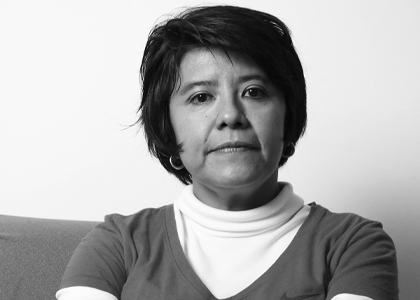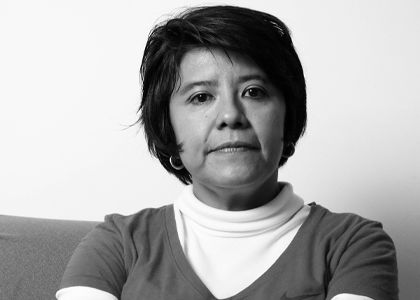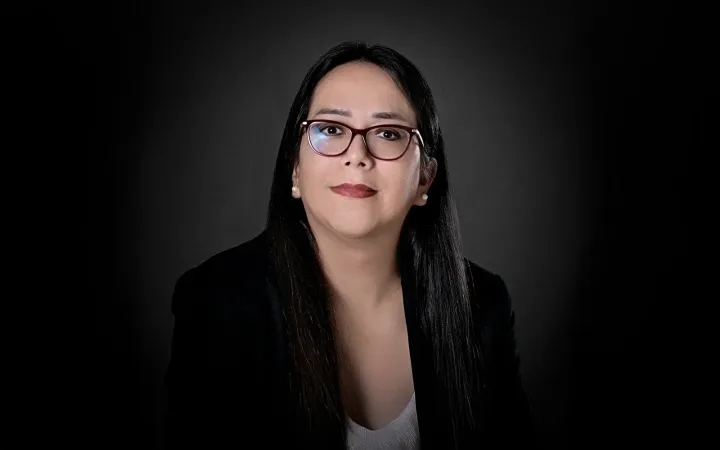Por Alma Maldonado, investigadora del Departamento de Investigaciones Educativas del CINVESTAV. Editora del blog de educación de Nexos llamado "Distancia por tiempos".

¿Cómo explicarle a la sociedad mexicana las afectaciones que el proyecto del ejecutivo federal de Ley General de Ciencia tendría para el desarrollo del país si se aprueba tal y como está?
A esa pregunta nos hemos enfrentado una y otra vez quienes estamos activamente participando en espacios públicos para que en esa ley no se imponga una sola visión y sea aprobada por consenso. ¿Cómo sensibilizar sobre un tema que parece demasiado técnico y lejano de la realidad de las personas?
Aquí un intento. Estuve apenas en la Feria Internacional del Libro del Palacio de Minería, pasé por los estantes de los centros públicos de investigación (CPI): el Centro de Investigaciones y Estudios Superiores en Antropología Social (CIESAS), el Instituto Mora y el Colegio de la Frontera Norte (COLEF), entre otros. Por cierto, no hubo stand del CIDE. No parece casualidad. Pues bien, los CPI que sí están exhibiendo sus publicaciones ofrecen múltiples libros especializados sobre temas muy diversos, violencias de todo tipo: del Estado, política, policiaca, del narco, de género; subculturas: urbanas, rurales, transfronterizas; desigualdad en México y en América Latina a distintas escalas y niveles; movimientos sociales; libros de historia: de México, de otros países, de períodos muy específicos, de personajes, de instituciones. Lograr una vasta oferta de líneas de investigación requiere de mucho esfuerzo y trabajo, entre otros elementos: contrataciones de largo plazo; salarios dignos y competitivos; formación de estudiantes de posgrado; contratación de ayudantes de investigación; estancias sabáticas y posdoctorales; repatriación de gente que se formó fuera; recursos para desarrollar proyectos de investigación; colaboraciones internacionales, inter-institucionales, con gobiernos; dinero para encuentros con pares, asistencia a congresos y desarrollo de redes; recursos para difusión y producción editorial; infraestructura. Aspectos que quienes son ajenas al mundo académico no tienen por qué conocer, pero que sin los cuales es imposible el desarrollo académico.
Al caminar por sus estantes pensaba ¿si se aprueba la nueva ley que quiere imponer el Conacyt, seguiremos viendo publicaciones así? El problema es que la nueva ley de Conacyt señala que se establecerá una “agenda de investigación” que dice que será definida democráticamente (Capítulo I, Artículo 9, numeral II) y cuya aplicación será más rigurosa, en los centros públicos como los mencionados arriba porque estos carecen de autonomía plena, tal y como lo tienen otras universidades públicas como la UNAM y la UAM o como el Colegio de México. Primero, hay que decir que la ley no ofrece ningún mecanismo para que, en efecto, se tome una decisión “democrática” sobre la agenda de investigación. Al contrario, todos los órganos de decisión del Conacyt sacan a los representantes de los sectores (incluyendo comunidad académica), sólo incorporan con derecho de voto a 13 Secretarías de Estado, hay 6 invitados del sector académico, social y privado únicamente con derecho a voz. Segundo, en el caso de los 26 centros públicos tendrán que ajustarse a esa agenda para poder navegar mejor su relación con el Conacyt que es quien, en el citado proyecto, ejerce el control de los CPI al grado de que se dice en el proyecto de ley que los CPI pueden dejar de ser considerados como tales “por determinación de la Junta de Gobierno del Consejo Nacional” (que está controlada fundamentalmente por la persona titular del Conacyt) (Artículo 79).
No hay suficiente espacio para desarrollar cada uno de los temas que preocupan de la ley, pero el futuro de los 26 centros públicos de investigación y el trabajo y esfuerzo están en entre dicho.
Lo que pasó en el CIDE parece que fue un experimento sobre cómo dinamitar una institución que sin ser perfecta —ninguna lo es— se convierta en la sombra de lo que llegó a ser.
En suma, el proyecto de Ley del Conacyt busca orientar la ciencia mexicana hacia las prioridades del gobierno. ¿Y cuando no nos guste ese gobierno? ¿Y cuando no estemos de acuerdo con sus decisiones? La ley no protege la libertad intelectual y de investigación, imprescindibles en el quehacer científico. Este modelo de ciencia va en contra de los modelos que los países más exitosos en la producción de conocimiento han impulsado. Esta ley como está nos va a retrasar años quizás de manera irreversible. Es decir, esto quizás sí nos debería importar a todas y todos.
Las opiniones expresadas son responsabilidad de sus autoras y son absolutamente independientes a la postura y línea editorial de Opinión 51.
Más de 150 opiniones a través de 100 columnistas te esperan por menos de un libro al mes. Suscríbete a Opinión 51.







Comments ()